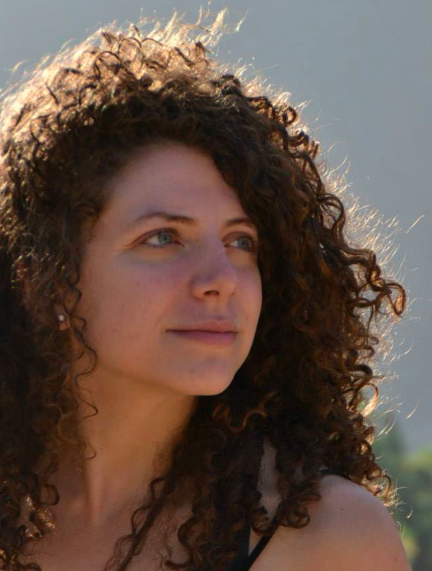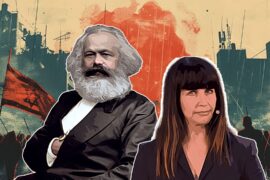In fifth grade, I told my grandma I had never seen her curls.
She replied,
“And you never will.”
The next day, I walked out to recess at Jewish day school next to Rabbi Robinson.
“You have Jewish curls” he remarked with a smile. I didn’t know what he meant at the time, but I pulled one of my curls with pride. It bounced. My hair always had a mind of its own, as my mom would say. It was as defiant as I was.
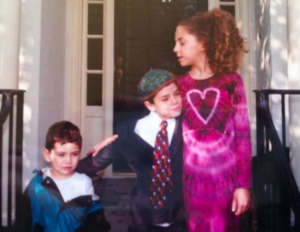
When I was in the second grade, my mother took my to get my hair blown dry. It was very expensive, very time consuming, and very not me. Upon returning home, I ran to the sink, jumped up to get my head under the faucet, and brought back my curls with the power of H2O. My mother was not happy, her dreams of a child with straight hair destroyed by my stubborn love of my curls.
When middle school arrived, however, something changed.
I decided to straighten my hair. I was done with having to pull it back, having no control over what it looked like, and only feeling pretty on days when my cousins treated me as their living doll and took on the day long challenge of straightening my hair. I wanted a change. I agreed to have my hair chemically straightened. I sat in a chair for eight hours while four Japanese women combed, blew dry, and added chemical straighteners to my sensitive scalp. In the back of my mind, I heard the faint whisper of Rabbi Robinson telling me I had “Jewish curls.”
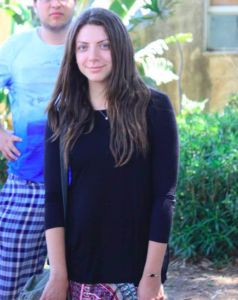
That night, I had a nightmare that I woke up and my hair was more uncontrollable than before. In my dream, I was Cousin It. My curls transformed me into a monster and I was ridiculed. When I woke up, there were no curls in sight.
For almost a decade I hid my curls. I went through most of middle school, all of high school, and a year of college hiding the spirals that so desperately wanted to see the light of day. My curls were especially stubborn. Treatment after treatment failed — only the strongest and most pungent chemicals could keep my texture at bay. I did Japanese, Brazilian, Keratin…any treatment I could find to keep up the illusion.
Until it ended. I went to Israel the summer after Freshman year of college. I explored religion. I explored my nation and nationality. I gained an appreciation for where I came from. I developed a deep sense of identity with people. I met beautiful Jewish women with beautiful Jewish curls. They were from Yemen, from Syria, from Egypt, and we all shared something that I had kept in hiding. I pictured Miriam in the desert dancing with her timbrels and Jewish tendrils. I saw Jewish women with their hair covered and one curl coming out. I made friends in the hills whose long curls went down past their waists. They fit so well into the landscape that I held so dear to my soul.
The voice in my head of Rabbi Robinson telling me I had Jewish curls came back into my head, but this time I did not resist.
I let them grow.
The history of the Jewish people is one of resilience and survival. My hair possesses a similar persevering nature. My curls were hard enough to keep at bay when I was intentionally straightening them. Now that I was growing them out, they did not hold back. The twists and turns came back in full force, welcoming me into a cushion of identity that I had long ignored for something I had been taught was more palatable.
The growth of my curls was not an act of vanity but a personal form of resistance against a larger culture that told me that appearing different meant appearing worse.
I spent a year growing out my hair. I had half straight-half curly hair that I hid under a beanie until it got too long and I couldn’t. My hair elicited all kinds of remarks — curly hair on top and straight hair on the bottom was not a typical look. When it was finally long enough where I felt comfortable chopping it off, I was terrified. I sat in the hair salon praying that I wasn’t returning to a nightmare.
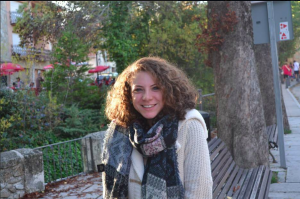
When I arrived home after my haircut, an uncle of mine remarked “why did you cut off your straight hair? You were so pretty.” I ignored him.
A week after my haircut, I set off for Spain. I arrived with a full head of curls — something I had not experienced since I was in middle school. TSA stopped me in line and pat down my hair to make sure I wasn’t carrying anything in it.
In Spain, I straightened my hair for the high holidays. I was frightened by the calls I could hear from balconies of people making fun of the parade of Jews walking to synagogue to pray, so I decided to hide my connection to them. With news of anti-Semitic attacks in Paris filling the headlines, I visited France with straightened hair and a hidden Star of David necklace.
I also started to read Ladino poetry, discovering a more sensual and romantic side of Jewish history and strengthening my pride and comfort in my heritage.
Around Sukkot, I grew comfortable enough to wear my curls with my formal dress. The rabbi’s son wrote to me to tell me he had liked my hair better when it was straight. My boyfriend at the time told me he preferred it straight. I was unfazed. I was finding new ways to embrace my curls, finding friends through similar textures, catching eyes of everyone on the street because no one had hair like mine, and I was picturing the women in the Ladino poetry I read with long crazy curls like mine.
When I arrived back from Spain, I had toned down my religious observance, but my pride in my Jewish origins only grew — and my hair reflected that. I didn’t pick up the straightener again. I wouldn’t accept anything less than what G-d gave me and I would never again consider dating a man who preferred my hair straight.
From Spain, I went to Lima, Peru, and my curls came with me.
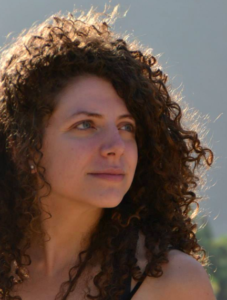
In Peru, my curls got me jobs. Not many women in Peru have curls. Before I knew it, I was dancing in music videos and appearing in comedy shows. On one particular night, I was driven home from set by a director who told me that his mom had the same hair as mine. When I asked her where she was from, he told me she was Palestinian.
I was reminded of the connection that I share with other women descending from Israel and that part of the world that share my texture. While on the international stage, conflict dominates the news, all of us women, whether we hide it behind head coverings or not, share a similar connection to that part of the world and our hair is visual proof of our roots and our decision to hide them or flaunt them.
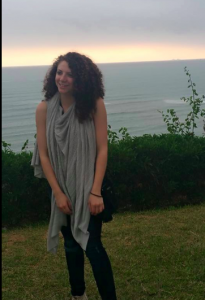
Just as his Palestinian mother’s hair was a symbol of where she came from, mine is my visual reminder of years of twisting and turning and wandering as a Jew, the centuries that my ancestors spent defending their right to practice Judaism or to identify as Jewish, resulting in my strong national identity and my curly reminder of that struggle. I wear my hair with pride not because it’s attractive to the eye, but because, for me, it is a symbol of the resilient spirit of my ancestors — a spirit that lived through countless expulsions, pogroms, attempts to massacre, to oppress, and to stamp out our Jewish identity. I wear my Jewish curls because they symbolize centuries of staying true to who we are as a people. I can only hope that my own children carry their origins with pride from the beginning, never hiding their “Jewish curls.”
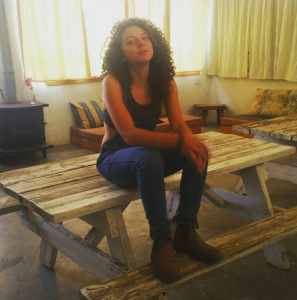
(Originally published at http://www.timesofisrael.com/)

